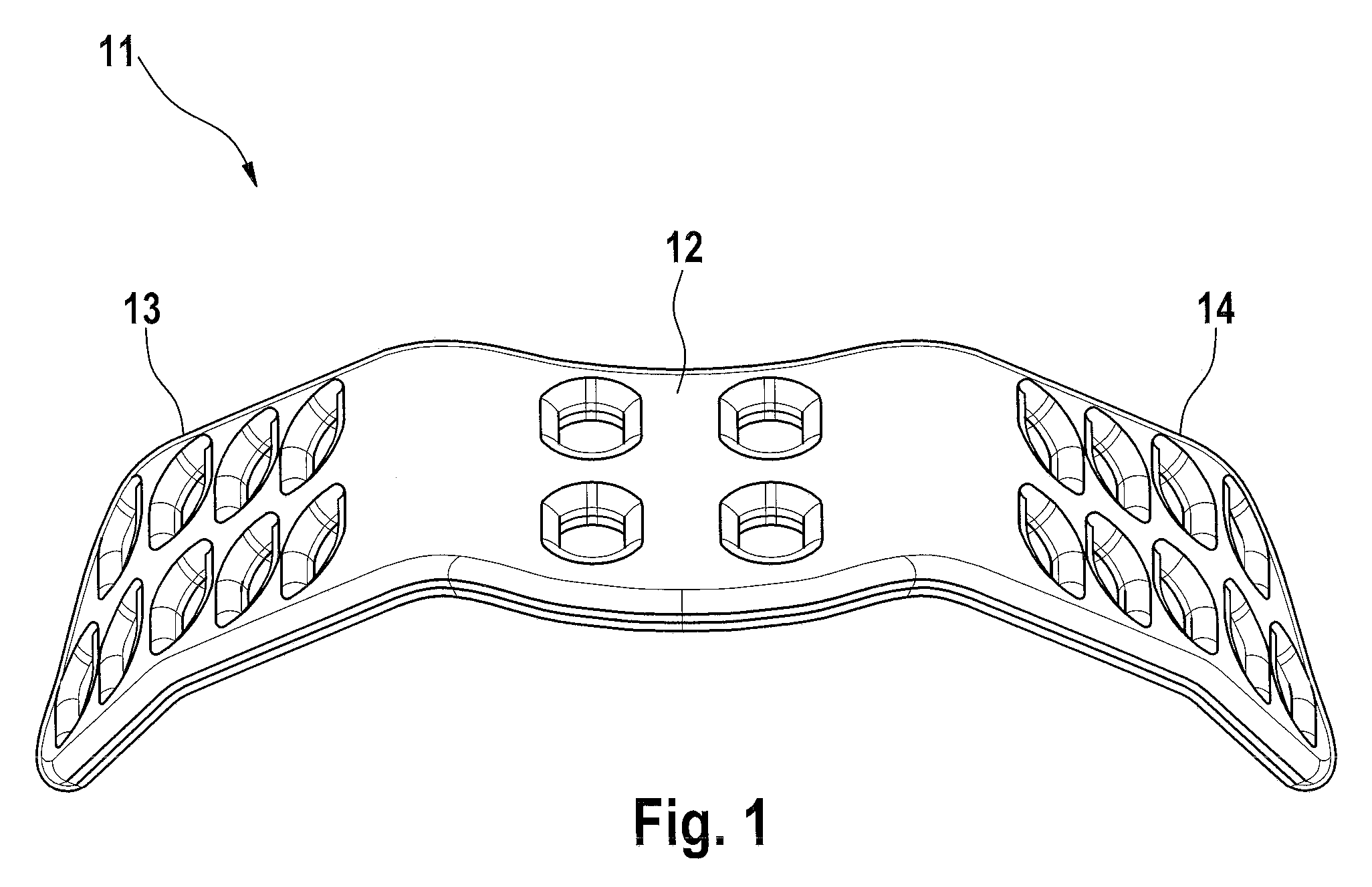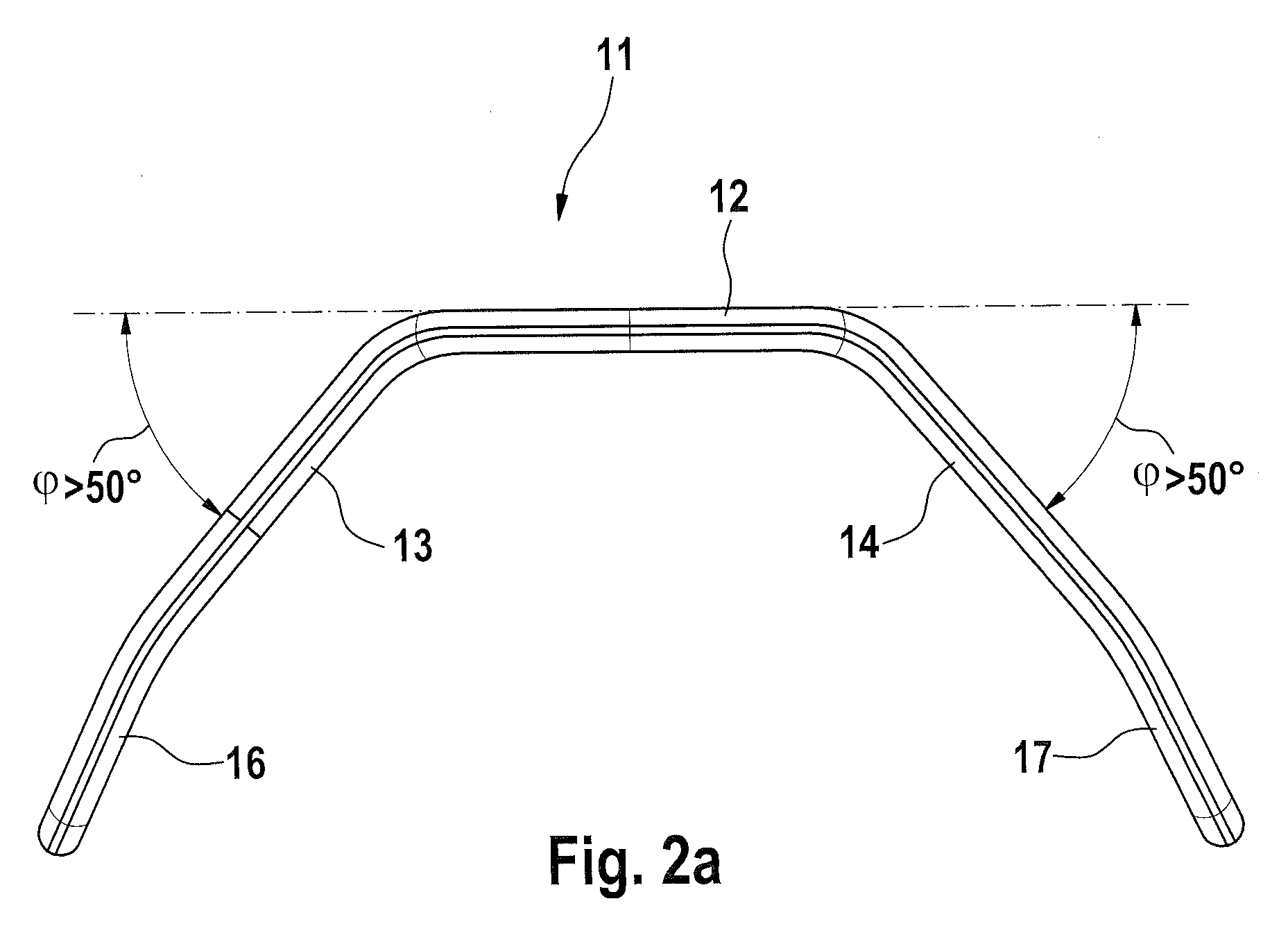Implant for spreading the nasal wings
a nasal wing and implant technology, applied in the field of nasal wing implant, can solve the problems of nasal plaster negatively affecting the external appearance of a person, unsuitable permanent application, skin problems,
- Summary
- Abstract
- Description
- Claims
- Application Information
AI Technical Summary
Benefits of technology
Problems solved by technology
Method used
Image
Examples
Embodiment Construction
[0032]FIG. 1 shows a perspective view of a first possible embodiment of an implant 11 according to the invention. Said implant has been bent from a flat strip 10, as diagrammatically shown in FIG. 3, to form a roof-like spatial shape.
[0033]In the flat section already, the strip 10 is bent in a V-like manner and comprises a rounded tip. Said strip 10 comprises a number of regular perforations 15 that help not only to reduce the weight of the implant 11, but also to reduce as far as possible the fraction of exogenous material in the body of a patient. Furthermore, the perforations 15 promote growth of the tissue into the implant 11. The implant 11 is surgically placed underneath the wing cartilage into the nose by means of a so-called open rhinoplasty and is attached to the triangular cartilage by means of a suture. In this process several individual sutures are placed through the perforations and the triangular cartilage and are fixed.
[0034]FIGS. 1 and 2a clearly show that the embodi...
PUM
 Login to View More
Login to View More Abstract
Description
Claims
Application Information
 Login to View More
Login to View More - R&D
- Intellectual Property
- Life Sciences
- Materials
- Tech Scout
- Unparalleled Data Quality
- Higher Quality Content
- 60% Fewer Hallucinations
Browse by: Latest US Patents, China's latest patents, Technical Efficacy Thesaurus, Application Domain, Technology Topic, Popular Technical Reports.
© 2025 PatSnap. All rights reserved.Legal|Privacy policy|Modern Slavery Act Transparency Statement|Sitemap|About US| Contact US: help@patsnap.com



